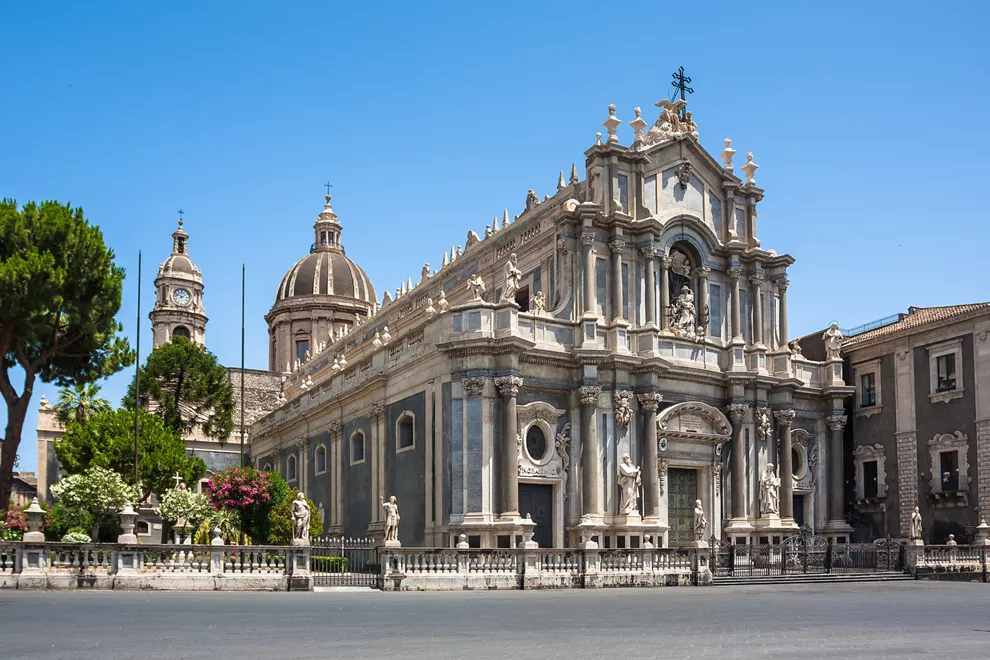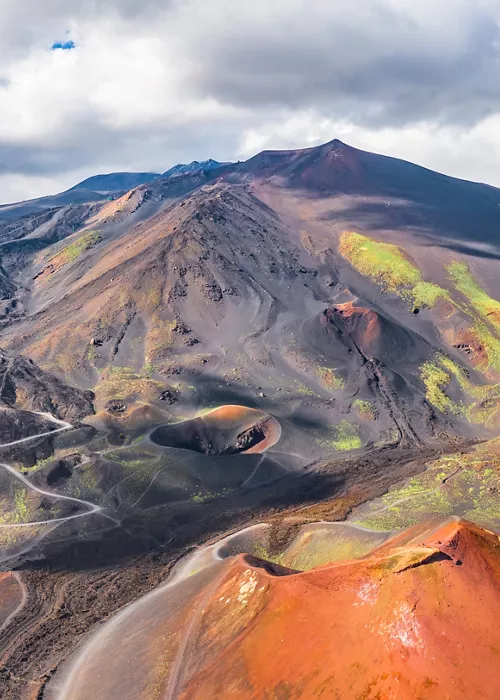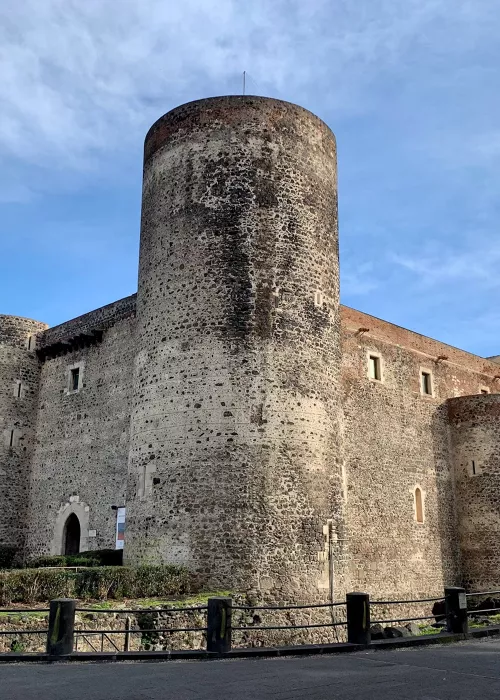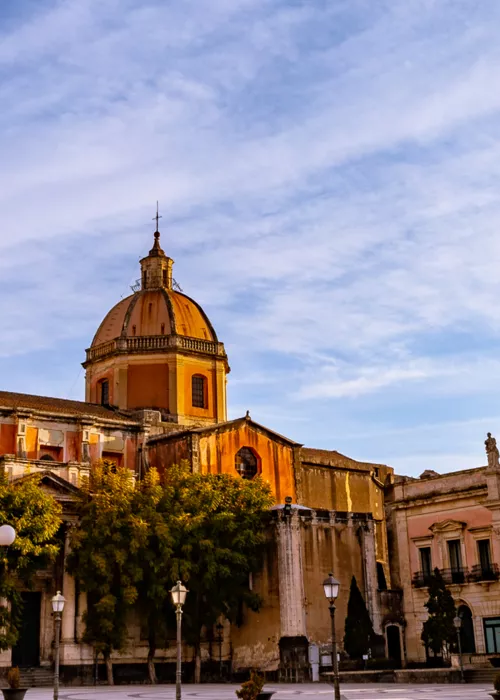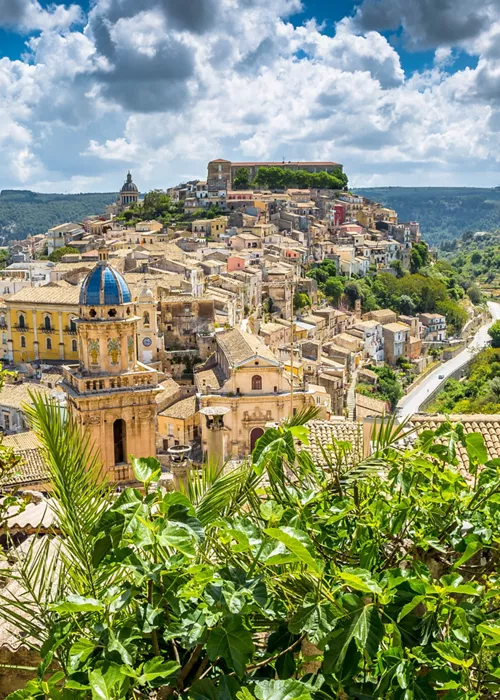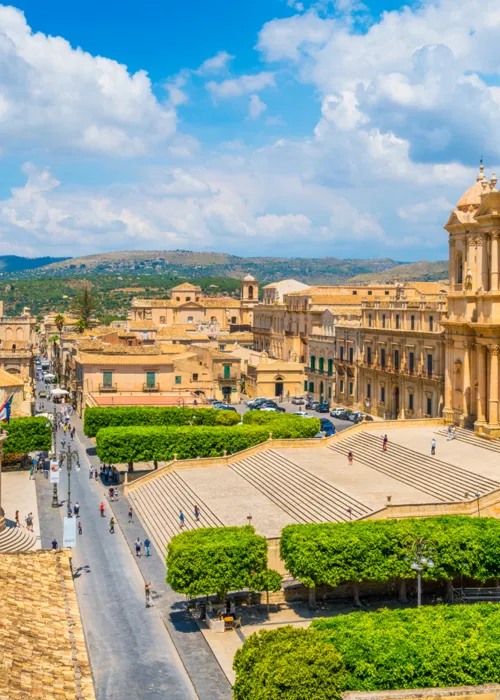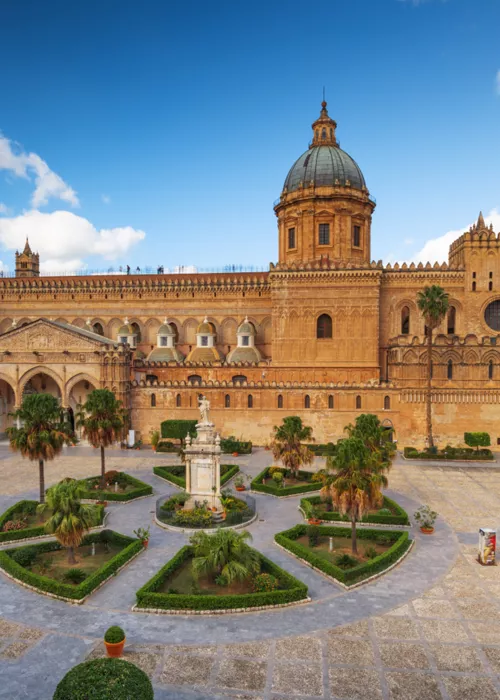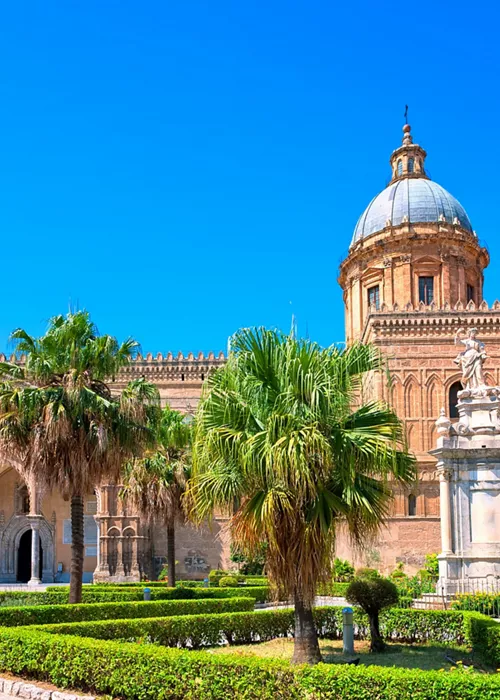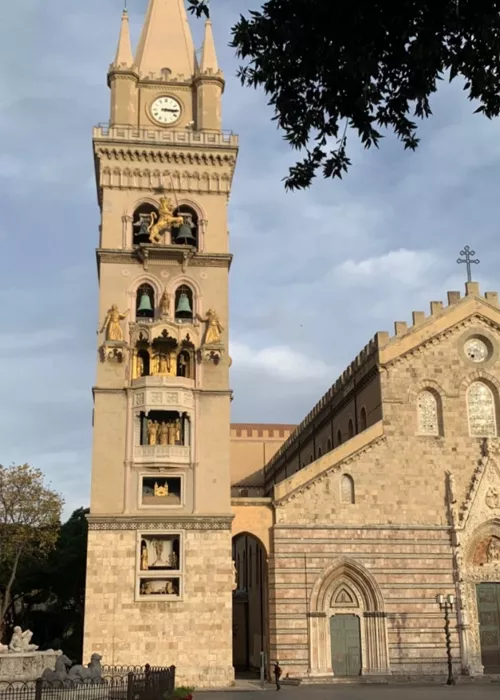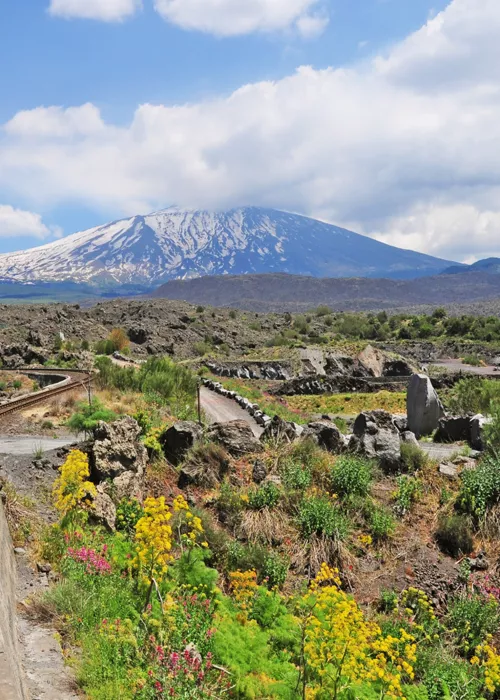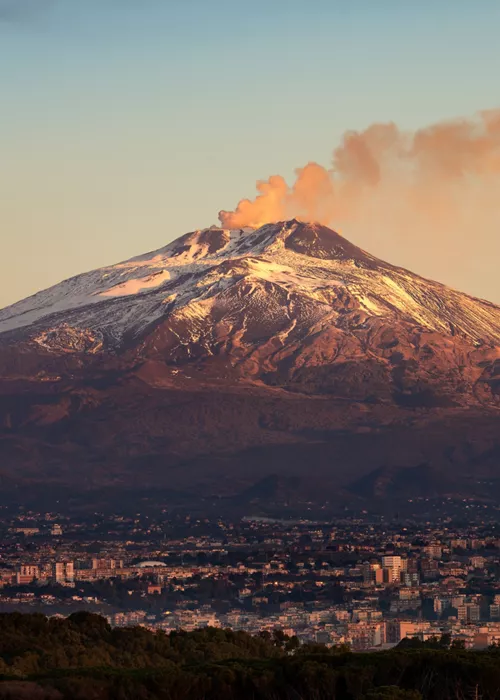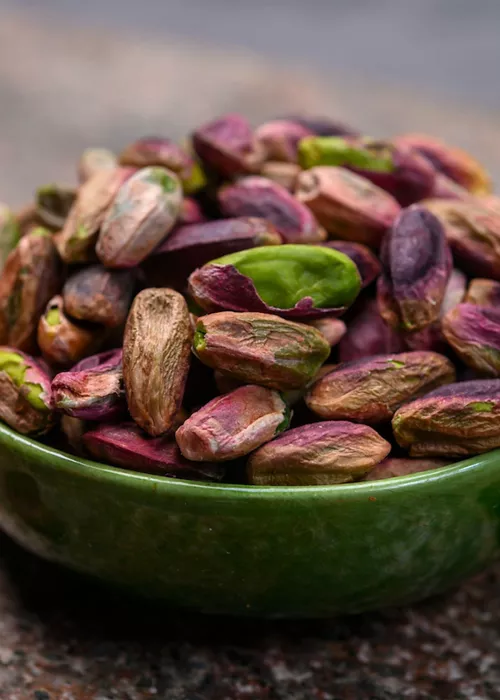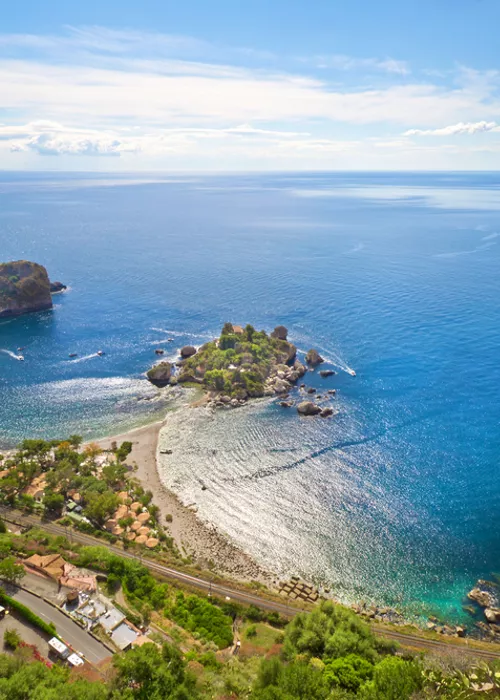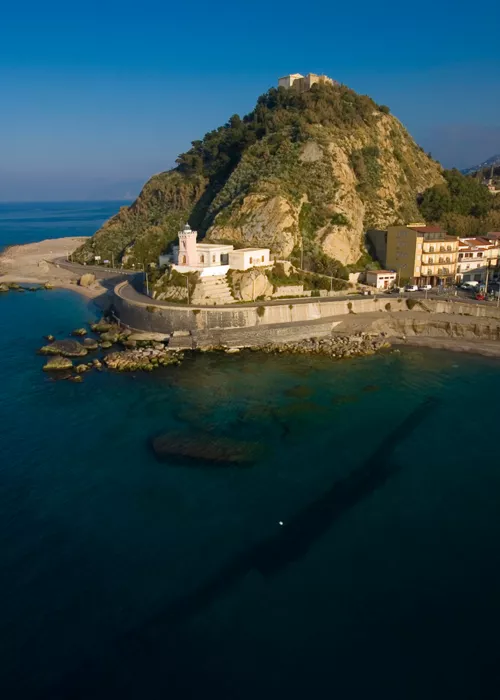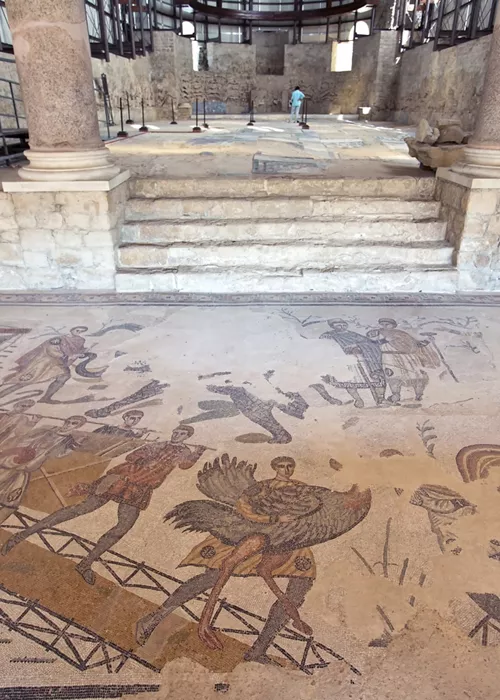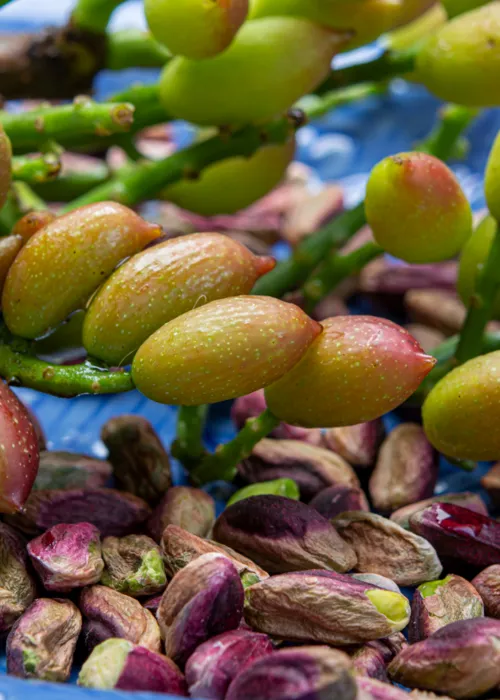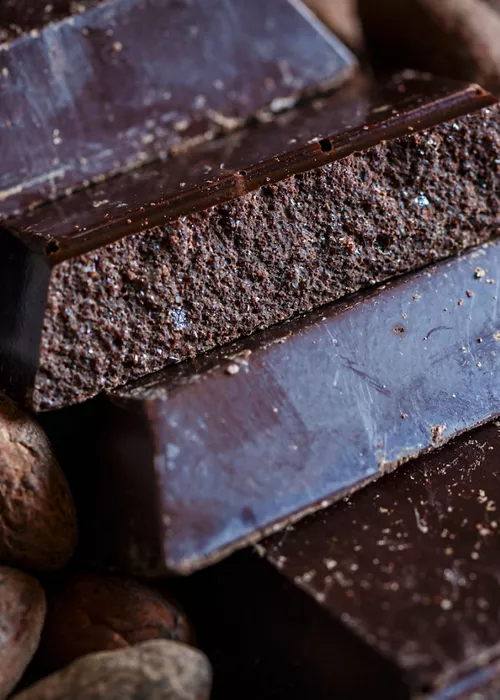Catania, a baroque city with a gritty energy
5 minutes
At the foot of Mount Etna, the highest active volcano in Europe, and overlooking the east coast of Sicily, is Catania, one of the biggest centres of the Sicilian Baroque.
It will take just a short walk through the streets of the historic centre to understand why UNESCO has decided to protect its architecture by declaring it a World Heritage Site: Catania is an impressive black and white open-air setting. Its baroque monuments are characterised by bichrome facades, that is, by the combination of lava stone and white marble.
We do not want to spoil anything, but be prepared to shop in busy markets that you thought didn't exist anymore, to dive into crystal-clear waters that bathe beaches of fine sand and black volcanic stone, to taste dishes of a culinary tradition that will make you swoon.
History and fun facts about Catania
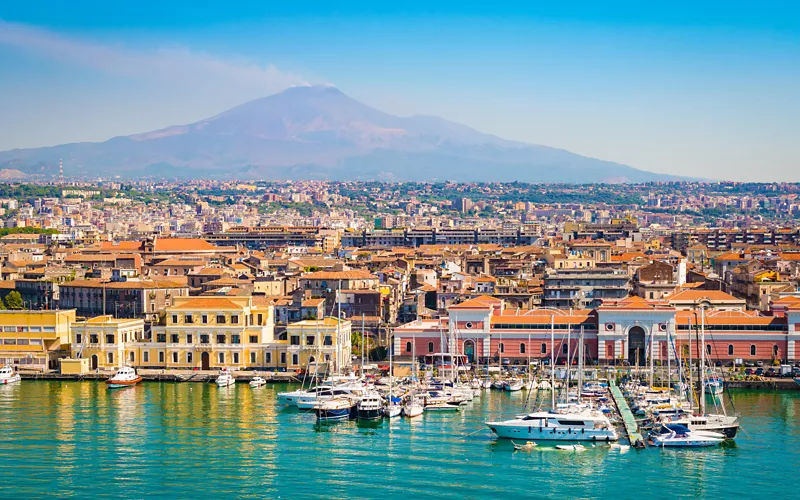
The history of Catania begins in 729-728 BC, when some Greek settlers from Naxos founded Kατάvη, Katane. After a period of Syracuse domination, in 263 BC the history of the city continued under the Romans. The city suffered the same fate as the rest of Sicily over the centuries, between domination, destruction and rebirth. From 1402 until 1416, it was with the Aragonese King Martino I of Sicily that Catania became the capital of the Kingdom of Sicily.
Two grave natural disasters, the eruption of Etna in 1669 and the Val di Noto earthquake of 1693, struck Catania in the modern era. From the second it was reborn, dressed in the SicilianBaroque style, thanks to the inspiration and talent of Giovan Battista Vaccarini. After the Congress of Vienna, from the union of the Kingdom of Sicily and that of Naples, the Kingdom of the Two Sicilies was born. During this period, the city of Etna acquired the status of a municipality and became one of the seven provinces under the Bourbon administrative reform. In 1816, a year after the Congress of Vienna and after the Treaty of Casalanza, the Kingdom of Sicily and that of Naples were united, giving rise to the Kingdom of the Two Sicilies, acquiring the status of a municipality shortly after and, thanks to the Bourbon administrative reform, it became one of the 7 Sicilian provinces.
It became part of the Kingdom of Italy in 1860, Catania was the eighth among the 27 cities decorated with a gold medal as 'deserving of the national Risorgimento' "for the highly patriotic actions carried out by the city during the Risorgimento period.
What to see in Catania: the must-see places
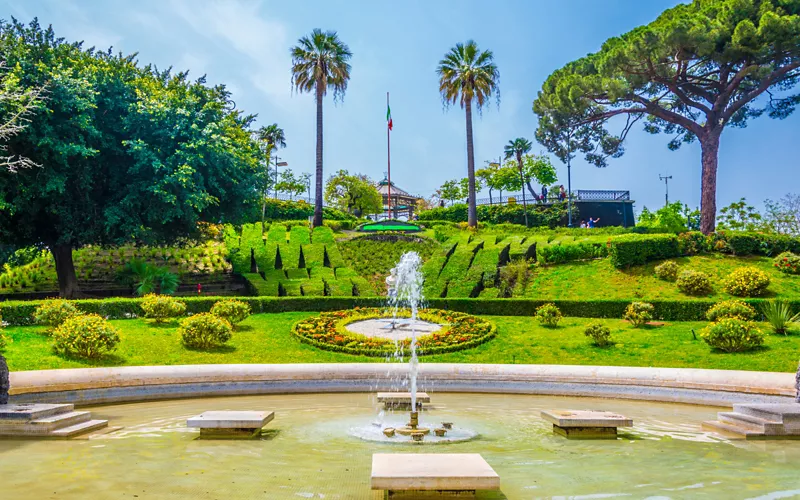
With a historical and cultural heritage such as that of Catania, it is essential to do some planning so as not to risk skipping the masterpieces on which the historic centre is based, getting lost among squares and alleys. In other words, if you are wondering what to see in Catania, rely on our mini-guide, and start planning your next trip here.
We start fromEtna and its 59,000 hectares of park, the pine forest, the black lava surfaces and the smoking craters. Pack something heavy, even in August, and don't forget to visit the top of the volcano.
Once in the city, your first stop will be the Ursino Castle, founded by Frederick II of Swabia in the 13th century and a rich civic museum today. As you stroll through the streets of the centre, keep an eye out for the black and white buildings that overlook large squares. Firstly, Palazzo Biscari, the biggest noble residence in Catania/Nearby, you will find the elegant Teatro Massimo, dedicated to Vincenzo Bellini, an illustrious son of this city.
Take a break at Villa Bellini to see one of the two oldest gardens as well as one of the four main parks in Catania.
Finally, visit the Cathedral of Catania, in whose wonderful square 'O Liotru', the elephant symbol of the city, dominates, and take a walk along Via Etnea, the most important street that stretches for 3 km.
Do you have any more time left? It will be very well spent if you can visit the Pescheria of Catania, the ancient and noisy morning fish market that can be reached by climbing a volcanic rock staircase.
4 ideas on what to do in Catania
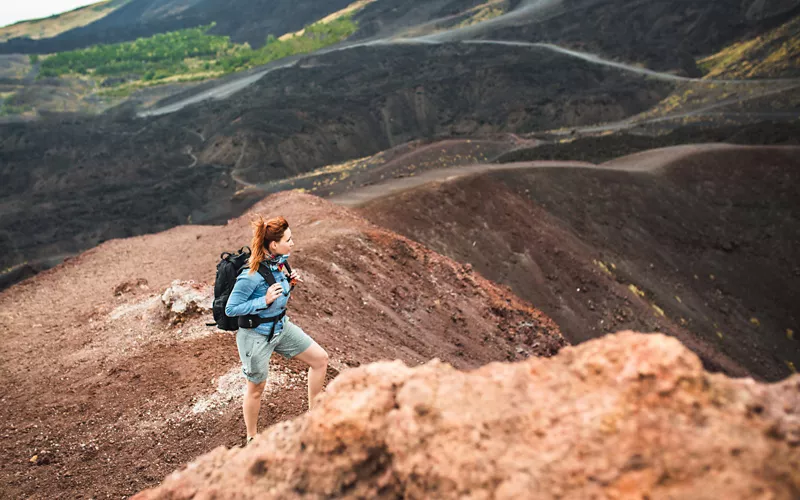
You can choose what you like, but a trip to Etna is a must, because 'a Muntagna, as they call it here, should not only be admired but experienced. How to opt for a trek, an off-road tour or an Etna Mountain Bike Tours.
Take another tour of Catania, perhaps looking up at the sometimes bizarre baroque of the famous balconies of the noble palaces.
And, if you can, treat yourself to a concert or an exhibition chosen from the rich programme of the Bellini Festival, held every year from 23 September to 3 November.
What to eat in Catania: some specialities
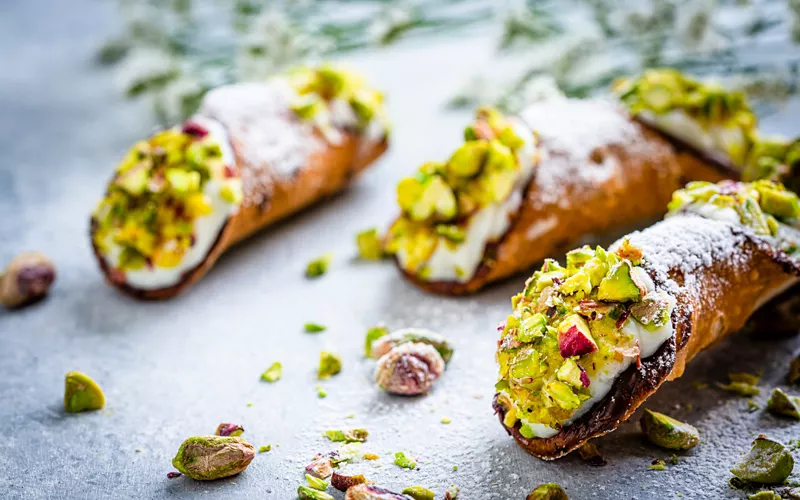
If you're wondering what to eat in Catania, know that the only difficulty you'll encounter looking for the answer is being spoilt for choice.
- Start with pasta alla Norma, a typical dish of the city, with tomato, salted ricotta, a little basil and fried aubergines. Created in Catania, it takes its name from a famous opera by Bellini.
- If you want a lighter alternative, though not too much lighter, choose Carrettiera spaghetti, seasoned with oil, raw garlic, pepper and grated pecorino cheese.
- Always keep some room for a Sicilian cannol, a crunchy waffle rolled with a creamy filling of ricotta cream, of which there are numerous variants today. The typical desserts of Catania are dedicated to its patron saint, Agata. We are talking about Olivette and Minnuzze of Sant'Agata. If the former are olive-shaped balls made of almond paste, coloured green and dipped in caster sugar, the latter are miniature cassatas: sponge cake filled with ricotta, candied fruit and chocolate covered with icing and decorated with a candied cherry. Their name is reminiscent of the martyrdom of the Catania virgin whose breasts were removed.
And above all, try street food. Street food here is a moral obligation, whether it is an iris, a typical fried dessert filled with cream or ricotta, or an arancino: be careful, here in Catania you have to ask for it in the masculine form!
Unusual places in Catania
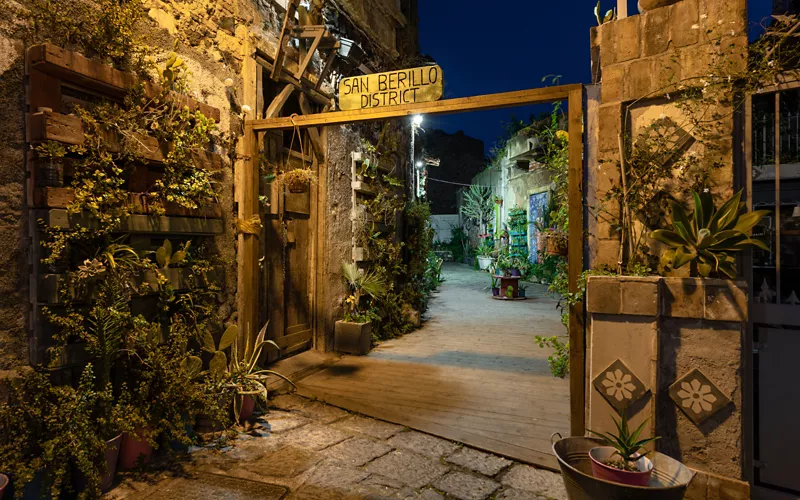
Even in the face of so much universally recognised beauty, you can find unusual places that are worth dedicating time to:San Berillo, a historic district with a thousand facets with its unfinished buildings and those destroyed by bombing; the Catania Landing Museum, a concentrate of local history lived during the Second World War, enriched by multimedia exhibitions; the Fera 'O Luni, the market that is held in the alleys between Piazza Carlo Alberto and Piazza Stesicoro. It is open from Monday to Friday, although the name refers to its ancient and only opening day: Monday.

